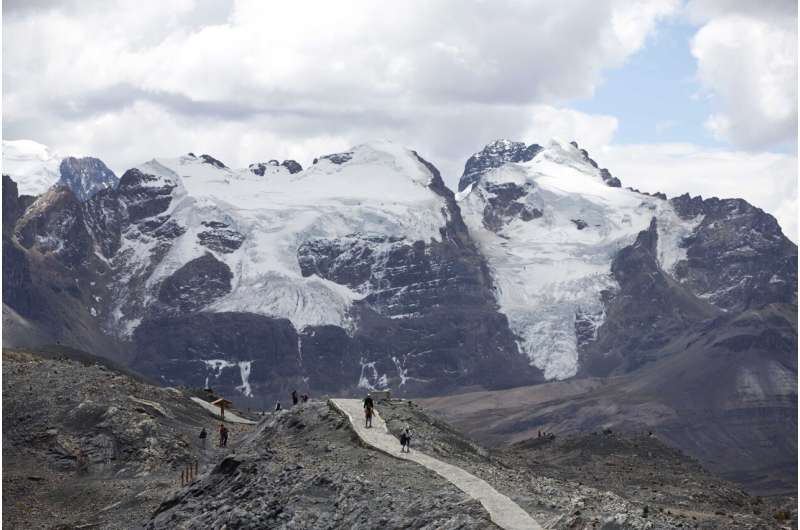This article has been reviewed according to Science X's editorial process and policies. Editors have highlighted the following attributes while ensuring the content's credibility:
fact-checked
reputable news agency
proofread
Peru lost more than half of its glacier surface in just over half a century, scientists say

Peru has lost more than half of its glacier surface in the last six decades, and 175 glaciers became extinct due to climate change between 2016 and 2020, Peruvian scientists from the state agency that studies glaciers said Wednesday.
"In 58 years, 56.22% of the glacial coverage recorded in 1962 has been lost," said Mayra Mejía, an official with Peru's National Institute of Research of Mountain Glaciers and Ecosystems, or Inaigem.
The factor that causes the greatest impact is the increase in the average global temperature, causing an accelerated retreat of glaciers, especially those in tropical areas, Jesús Gómez, director of glacier research at Inaigem, told The Associated Press.
The South American country has 1,050 square kilometers (405 square miles) of glacial coverage left, an area representing about 44% of what was recorded in 1962, when the first glacier inventory was carried out.
Mejía, an expert in glaciology, said there are some mountain ranges in Peru where glaciers have almost disappeared, namely Chila, which has lost 99% of its glacial surface since 1962.
Chila is key because the first waters that give rise to the Amazon River, the longest and mightiest in the world, descend from the glacier.
Beatriz Fuentealva, president of Inagem, said the loss of glaciers increases the risks for those living in lowland areas, as was the case in 1970 when a huge sheet of ice from the snow-capped Huascarán, in the northern Andes, broke off after a 7.9 magnitude earthquake, falling on a lagoon and causing a mud avalanche that destroyed the city of Yungay and left more than 20,000 dead.
© 2023 The Associated Press. All rights reserved. This material may not be published, broadcast, rewritten or redistributed without permission.




















